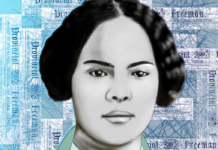In his 1945 memoir “Black Boy,” African-American author Richard Wright describes the process of migrating from the American South to cities far and wide like Chicago, Washington, D.C., New York, and Los Angeles. In the passage that would become the inspiration for the title of Isabel Wilkerson’s seminal work and a recent report, Wright states:
I was leaving the South
To fling myself into the unknown …
I was taking a part of the South to transplant in alien soil,
To see if it could grow differently,
If it could drink of new and cool rains,
Bend in strange winds,
Respond to the warmth of other suns
And, perhaps, to bloom.
Upon reaching their cities of destination, Blacks did not find perfection, but it wasn’t perfection they sought. Most pressing was escaping Jim Crow culture that was literally and figuratively depriving thousands of people of color of their lives and liberty—robbing them of the American dream.
WHAT IF I TOLD YOU THAT THE FATE OF MILLIONS OF CHILDREN, OFTEN BLACK AND BROWN, REMAINS IN THE BALANCE?
What if I told you that the fate of millions of children, often Black and brown, remains in the balance? Their predicament is not tied to being in the South, but it is largely dependent upon geography. They are no longer relegated to segregated institutions, but instead navigate a bifurcated system of “haves” and “have-nots.”
If there’s a new Jim Crow, it’s K-12 education. Black students are more subject to in-school discipline and are suspended three times as often as their white counterparts. With all that time away from school is it any wonder that only 6% of Black students met all four ACT college readiness benchmarks? That compares to 33% of white students.
I SUPPORT PARENTS BEING ABLE TO ACCESS MEANINGFUL EDUCATIONAL OPTIONS THAT MEET THEIR CHILD’S NEEDS. NEITHER COST NOR GEOGRAPHY SHOULD STAND AS BARRIERS TO THIS AGENCY.
It is abundantly clear that there is still much work to be done in K-12 public schools in the U.S. I, for one, am not interested in waiting for the system to turn itself around while our children continue to wither and die on the vine. Instead, I support parents being able to access meaningful educational options that meet their child’s needs. Neither cost nor geography should stand as barriers to this agency.
That being said, while school choice can be transformational for children, families, and communities, choice alone is not enough. The schools that parents choose must do their best to serve those students well. Thankfully, many of the private school leaders and board members that I’ve met with while advocating for parent choice programs are interested in creating the best learning environment possible for all students, regardless of socioeconomic status.
The Warmth of Other Schools
To better equip those who seek to foster a high-quality, inclusive, equitable, and mission-oriented environment for all students and families we recently released “The Warmth of Other Schools: Supporting Underrepresented Students in Private Schools.”
This new report features a road map for school leaders who want to improve their school community’s climate. Included in the report is a survey of existing research and best practices, but especially important are the voices of alumni and practitioners who have lived at the intersection of education and socioeconomic diversity.
To say this is “messy” work is an understatement. If you haven’t read a cringe-worthy story about a cultural encounter gone wrong at a public or private school recently, just wait a day or two. Here’s one from the district where my own kids are in school. Here’s one from my alma mater.
This report is particularly timely. Even now, school choice programs (charter, ESA, voucher, and otherwise) are being enacted in states across the country. Moreover, topics of civil rights, social justice, diversity, equity and inclusion have increasingly become part of the public consciousness. Taken together, thousands of historically underrepresented students will now have access to the school of their choice. The opportunity before us is to contemplate how we can ensure a holistically beneficial experience. This doesn’t mean schools should replace parents and other social networks, rather, new students and families can add to the vibrancy of a private school’s community while being woven into the school’s existing fabric.
We can do better and if ever there was a time, it’s now. I believe those of us willing to put our hands to the plow can cultivate a brighter future for historically underserved students. If we do, students won’t just matriculate, they will, perhaps, bloom.










